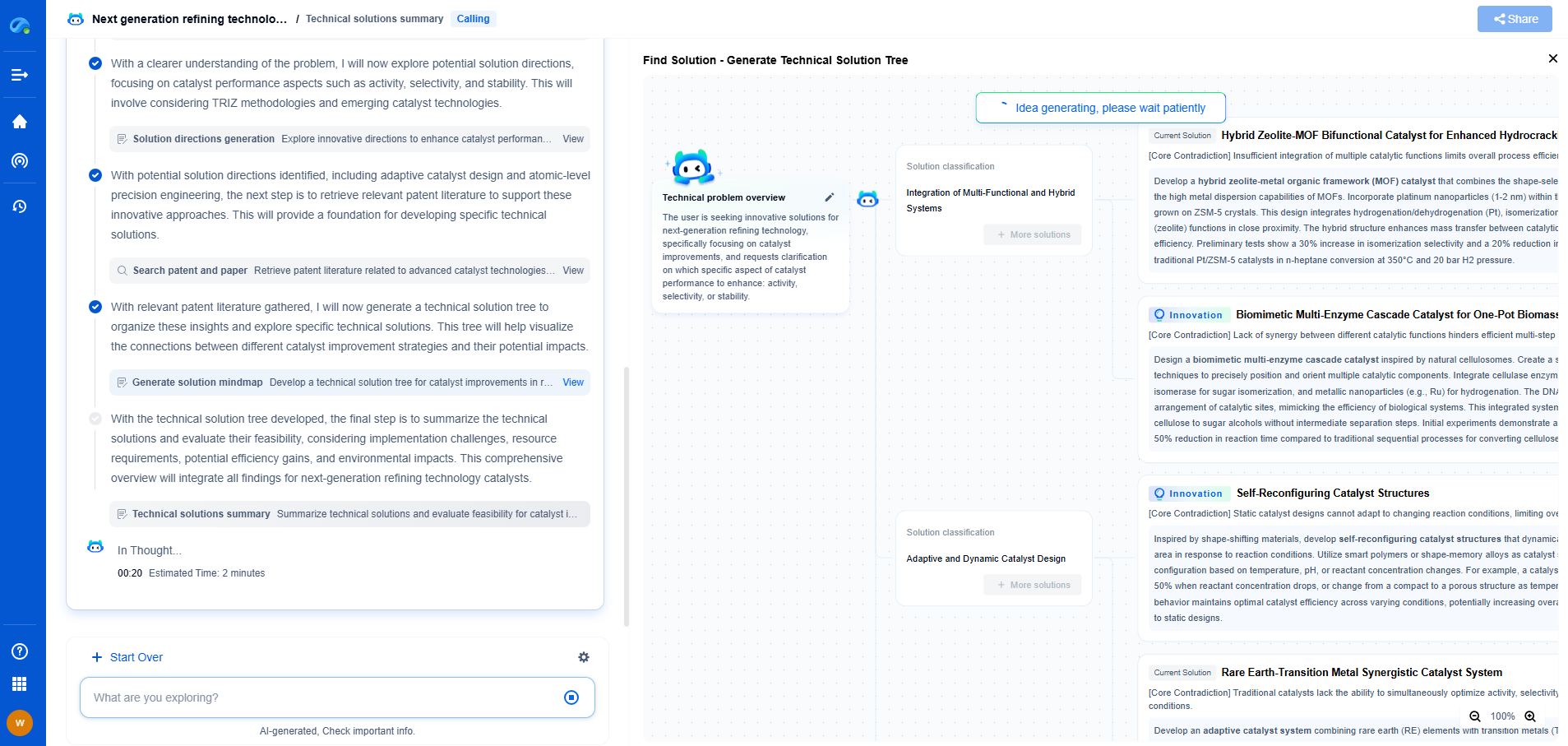FR1 vs. FR2 in 5G: Key Differences and Use Cases
JUN 27, 2025 |
As the 5G revolution continues to unfold, the technical intricacies of this groundbreaking technology are coming into sharper focus. Among the most significant aspects of 5G are the frequency ranges, specifically FR1 and FR2, which play crucial roles in how 5G networks are implemented and utilized. Understanding these two frequency ranges and their respective use cases is essential for anyone interested in the development and deployment of 5G technology.
**What is FR1?**
FR1, often referred to as the "sub-6 GHz" frequency range, encompasses frequencies below 6 GHz. These frequencies are not new to wireless communication; they have long been used in 2G, 3G, and 4G networks. The primary advantage of FR1 is its extensive range and the ability to penetrate obstacles such as buildings and foliage. This makes FR1 ideal for providing broad and reliable coverage across urban and rural areas.
FR1 frequencies are typically divided into low-band (below 1 GHz) and mid-band (1-6 GHz) categories. Low-band frequencies, while offering extensive coverage and penetration, are limited in terms of data throughput. Mid-band frequencies, on the other hand, offer a balance between coverage and capacity, making them a crucial component of many 5G deployments.
**What is FR2?**
FR2, known as the "mmWave" (millimeter wave) frequency range, includes frequencies from 24 GHz to around 100 GHz. This range is relatively new to mobile communication, and it introduces several unique characteristics. The primary benefit of FR2 is the ability to support extremely high data rates and massive network capacity, which are essential for applications requiring ultra-high-speed internet connections.
However, FR2 comes with its own set of challenges. Due to the high frequencies used, FR2 signals have a much shorter range compared to FR1 and are more susceptible to blockages from physical obstacles. This makes FR2 less suitable for broad coverage but ideal for dense urban environments or specific scenarios where high-speed connectivity is crucial.
**Comparing FR1 and FR2: Key Differences**
1. **Frequency Range and Bandwidth**: FR1 operates below 6 GHz, offering wide coverage and better penetration through obstacles. FR2, with its higher frequency range, provides significantly higher bandwidth but at the cost of reduced range and penetration.
2. **Coverage and Penetration**: FR1 is adept at providing widespread coverage, making it suitable for both urban and rural deployments. In contrast, FR2 excels in high-density environments where coverage can be managed with numerous small cells.
3. **Data Throughput and Capacity**: FR2 shines in scenarios demanding high data throughput due to its larger bandwidth. It supports applications like ultra-high-definition video streaming and augmented reality. FR1, while offering sufficient speed for most applications, cannot match the data rates achievable with FR2.
4. **Deployment Scenarios and Use Cases**: FR1 is preferred for nationwide coverage and in areas where infrastructure for small cells is limited. It is ideal for enhancing existing networks and ensuring consistent connectivity. FR2, on the other hand, finds its niche in urban centers, stadiums, and other high-capacity venues where rapid, high-volume data transfer is needed.
**Use Cases of FR1 and FR2 in 5G**
- **FR1 Use Cases**: FR1's strengths make it suitable for IoT applications, automotive communication, and wide-area network deployments. It ensures seamless connectivity for smart cities and rural broadband services, where reliable coverage is more critical than extreme speeds.
- **FR2 Use Cases**: FR2 is perfect for scenarios demanding instantaneous data transmission and low latency. This includes industrial automation, immersive media experiences like VR and AR, and dense urban locations requiring high-speed public transportation communication systems. It is also pivotal for next-generation communication technologies, such as V2X (Vehicle-to-Everything).
**Conclusion: The Complementary Nature of FR1 and FR2**
In the world of 5G, FR1 and FR2 are not competitors but complements, each serving distinct roles in the expansive 5G ecosystem. By leveraging the strengths and addressing the challenges of both frequency ranges, network providers can deliver comprehensive 5G experiences that are capable of supporting the diverse range of applications expected to emerge in the coming years. Understanding and utilizing both FR1 and FR2 effectively will be key to achieving the full potential of 5G technology, propelling us into a new era of connectivity and innovation.
Unlock Next-Gen Innovation in Communication Technology with Patsnap Eureka
The field of communication technology is evolving at breakneck speed—from 5G and satellite systems to next-gen wireless protocols and quantum communications. Staying ahead demands more than just information—it requires strategic insights, real-time patent intelligence, and a deep understanding of technological trajectories.
Patsnap Eureka, our intelligent AI assistant built for R&D professionals in high-tech sectors, empowers you with real-time expert-level analysis, technology roadmap exploration, and strategic mapping of core patents—all within a seamless, user-friendly interface. Whether you're optimizing signal processing designs, navigating 3GPP standards, or exploring IP strategies for IoT and 6G networks, Eureka helps you move faster, think deeper, and innovate smarter.
Try Patsnap Eureka today—and see how it can transform the way you work across the entire communication technology innovation lifecycle.
- R&D
- Intellectual Property
- Life Sciences
- Materials
- Tech Scout
- Unparalleled Data Quality
- Higher Quality Content
- 60% Fewer Hallucinations
Browse by: Latest US Patents, China's latest patents, Technical Efficacy Thesaurus, Application Domain, Technology Topic, Popular Technical Reports.
© 2025 PatSnap. All rights reserved.Legal|Privacy policy|Modern Slavery Act Transparency Statement|Sitemap|About US| Contact US: help@patsnap.com

